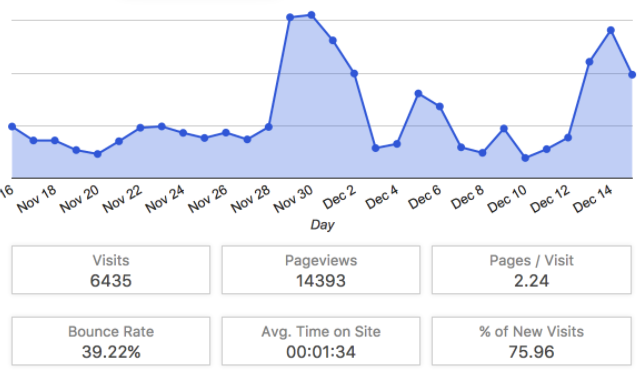If you have analytics tracking installed on your website, you’ve likely heard the term “bounce…

Designing Websites with a Mobile First Mindset
In Website Development: Before Building a Website, Layout the Plan , we discussed the importance of planning your website before you build it. According to Neilsen, Inc., nearly 60% of all new mobile phones sold are smart phones. (source: zdnetblog.com ) and this trend doesn’t look to be slowing down any time soon. Based on current trends for the next 10 years, smart phone ownership will reach 90% of the world’s population. With a large number of users switching from desktop to mobile browsing, creating a website without considering the mobile user will lead to additional work in the future.
Redirecting to Mobile
In the past, one strategy was to redirect smart phone traffic to a mobile-specific version of the website, when accessing a site’s main URL. The redirect method would send a user to m.websitename.com and although this worked, it presented several problems, the most notable being users wanted to access your main website, not a diluted, mobile-friendly version of it. Having a separate mobile site presented site owners with the additional problem of updating two websites. To alleviate the many issues of redirecting to a mobile site, many companies started using responsive design.
Responsive Web Design
Responsive Web design is an approach that adapts the layout of a page based on platform, screen size, device and orientation and optimizes the user experience to accommodate these factors. This makes for a unified user experience with one platform and eliminates the need for multiple versions.
 An example of a website that utilizes this technology is popular online news magazine, mashable.com. Mashable use “media queries” to determine the screen resolution, as well as flexible images and fluid grids to re-size the screen for proper fit and optimal viewing. This allows Mashable to use one website for all users regardless of device.
An example of a website that utilizes this technology is popular online news magazine, mashable.com. Mashable use “media queries” to determine the screen resolution, as well as flexible images and fluid grids to re-size the screen for proper fit and optimal viewing. This allows Mashable to use one website for all users regardless of device.
Traditionally, responsive web design has been considered from a desktop-first mindset and this is where we see the paradigm shifting. From a user perspective, although I might be accessing the exact same website when connecting via mobile phone, the experience is still based on a larger screen size. With the growing percentage of traffic coming from smart phone users, it becomes increasingly important to design with smaller screens in mind because the experience translates better when enlarged than vice versa.
A Mobile-First Perspective
The newest trend is to design websites from a mobile-first perspective. This means that the design of the website assumes it will be accessed by smart phones and tablets predominantly, thus adapting the related pages for desktop users. Features such as geo-location and touch are not typically useful to desktop experiences, but they are integral to mobile and tablet. Use of these new technologies is becoming more prevalent in applications and therefore more important for the future digital strategy.
As smart phone use becomes universal, it becomes increasingly necessary to consider mobile as a base technology rather than as alternative access. Marketers can capitalize on the fact that a strong, well-designed mobile website will function well on a large screen, and in this way, lessen the importance of designing with the desktop experience in mind. As smart phones become the device of choice in the world, prioritizing design choices will reflect the new paradigm. The mobile-first perspective can be considered an evolution in our digital world and as designers, we should evolve along with it.
For more information, contact us today.



